This week we were graced with the first of four consecutive super moons and with what some would call, a Blue Moon. To mark this celestial event, we take a break from exploring the seasonal wheel of the year and instead, we’ll deep dive into all things lunar including the Blue Moon, the wheel of months, the lunar calendar and lunar traditions and folklore from across Australia and Europe.
Once in a Blue Moon
You’ve probably heard of the term, ‘once in a blue moon.’ It has been part of our lexicon for at least 500 years and means ‘rarely’ or ‘hardly ever.’ Although the term Blue Moon doesn’t relate to their colour, moons that appear blue sometimes do occur, particularly following fires or volcanic eruptions that throw large amounts of dust or smoke into the atmosphere. The eruption of the Indonesian volcanic island of Krakatoa in 1883, caused the moon to appear blue around the world for two years!
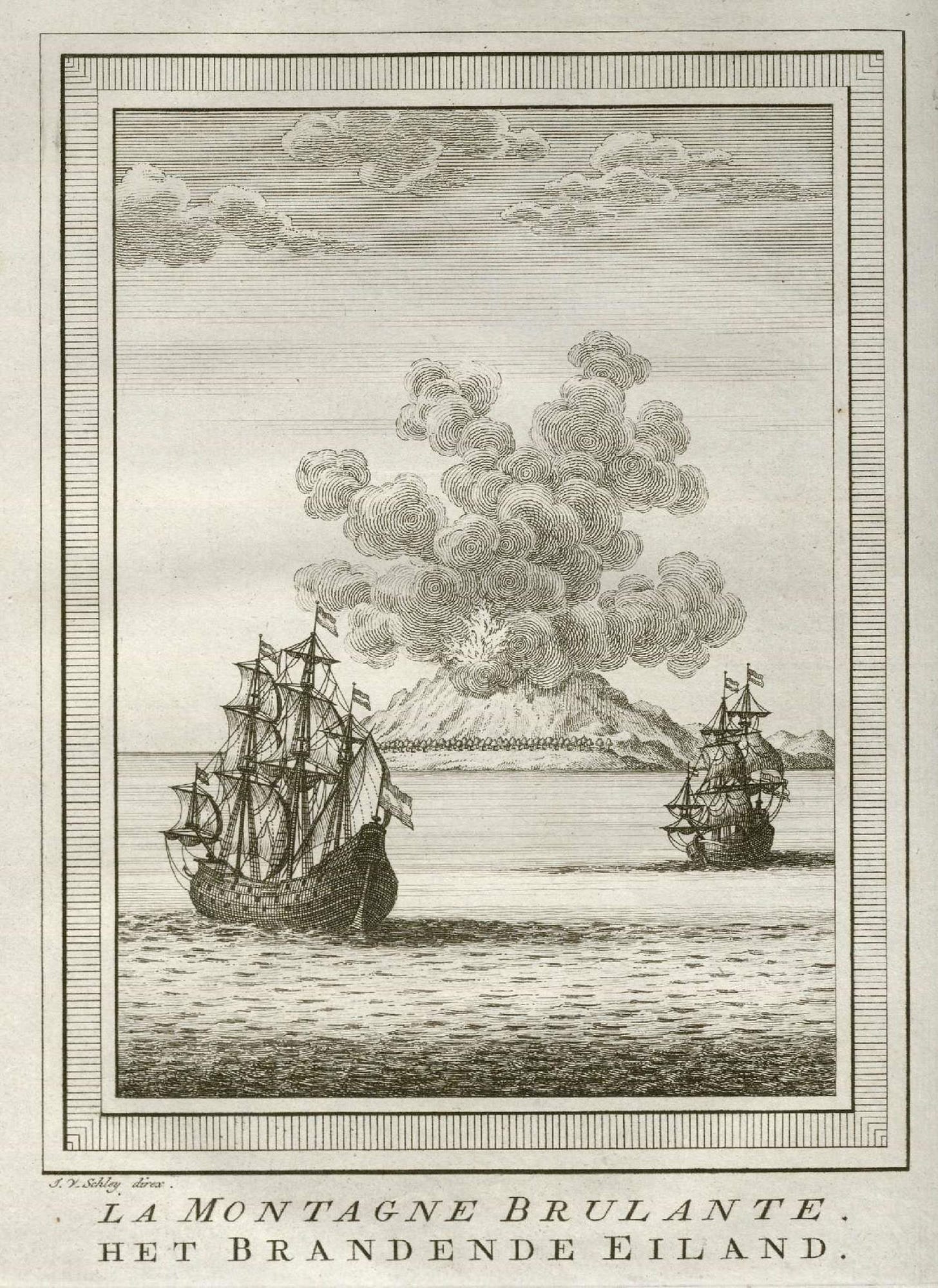
These days, ‘Blue Moon’ has two distinct meanings. The first meaning refers to the occurrence of a second moon in one calendrical month. Most months experience one full moon per month, however, due to differences between astronomical and calendrical months, and depending on a location’s time zone, some months may experience an extra full moon. The last Blue Moon using this definition occurred on 31 August last year, and the next one won’t occur until 31 December 2028.
The meaning of a Blue Moon as the second full moon in a single month was first defined in a 1946 article from Sky & Telescope magazine, which used an incorrect interpretation and calculation of the older concept of the seasonal Blue Moon. The first record of seasonal Blue Moons was a list of blue moon dates published in the Maine Farmers' Almanac from the 19th century until the early 20th century.
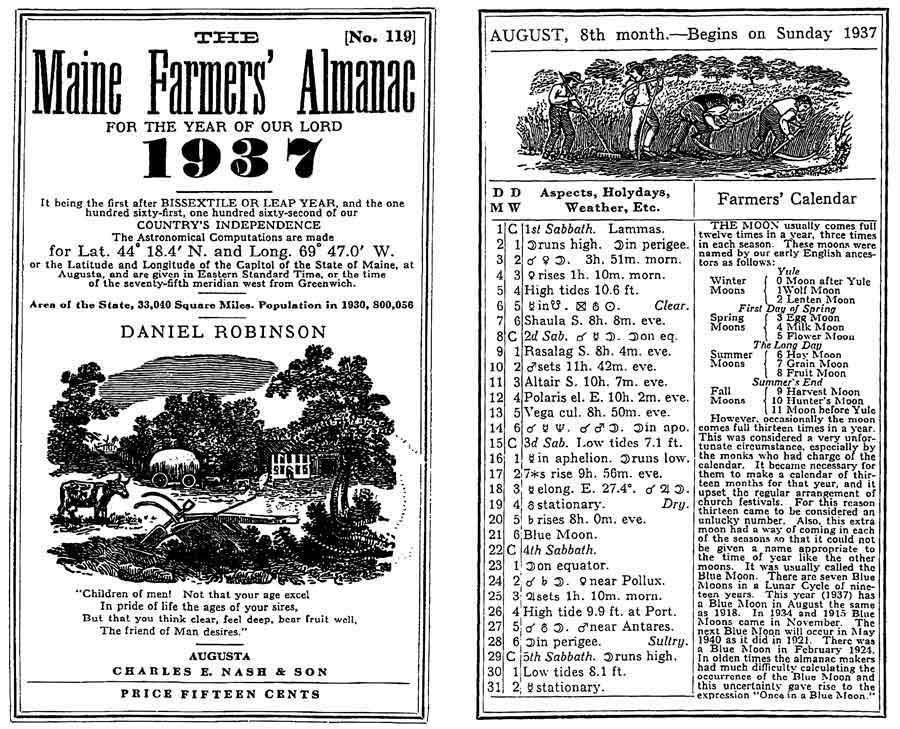
The seasonal Blue Moon is calculated on the number of full moons in a solar year, regardless of the length of the calendrical month and is always the third full moon in an astronomical season of four full moons.
The Star Walk app website explains that this third Blue Moon probably refers to:
…the Christian ecclesiastical calendar. In calculating the dates for Lent and Easter, Catholic clergy identified the Lenten Moon (the final Full Moon of winter) and Easter Moon (the first Full Moon of spring). The third Full Moon of the season arrived too early and upset the arrangement of Church holidays. It was marked a “betrayal Moon” to ensure that Lent and Easter corresponded with the right Full Moons and that other festivals would still fall on their “proper” dates.
More scientifically; it takes the moon around 29.5 days to orbit the Earth in a lunar month, which gives us about 12 full moons a year. However, because the lunar month is shorter than the calendrical month in a solar or tropical year (typically, 30 to 31 days, except for February), there is an extra full moon in one of the four seasons every two or three years. This additional (13th) full moon in a year is called a seasonal Blue Moon, which occurred this week on 19 August, and previously on:
21 November 2010
20 August 2013
21 May 2016
18 May 2019
22 August 2021
The next seasonal Blue Moon will occur on 20 March 2027 and again on 24 August 2029.
The Moon and the Earth
The moon exerts a fascinating influence on the Earth's natural systems. Gravitational forces from the moon contribute to the ocean tides, creating the ebb and flow of coastal waters. This lunar gravitational pull causes bulges in the Earth's oceans, resulting in high and low tides. Moreover, the moon's gravitational interactions with Earth's crust can lead to subtle changes in the planet's shape and movement, a phenomenon known as "earth tides."
The moon’s phases have an even bigger influence on the development of human culture and the concept of measuring time.
The Lunar Calendar
Calendars are intimately linked to human culture and the changing of the seasons. By tracking the movements of celestial bodies and associating them with certain times of the year, ancient cultures were able to develop an understanding of the seasonal rhythms of the earth and the natural world around them. Early humans developed systems to measure and organise time, typically based on the cyclical patterns of the sun, moon, and stars.
The earliest physical examples of lunar calendars are found in cave art in France and Germany, dating from c.32,000 BC, which documents the moon’s annual cycle, Earth’s ecliptic, equinoxes, solstices and seasonal changes. Animal bones have also been found with carved markings corresponding to lunar phases.

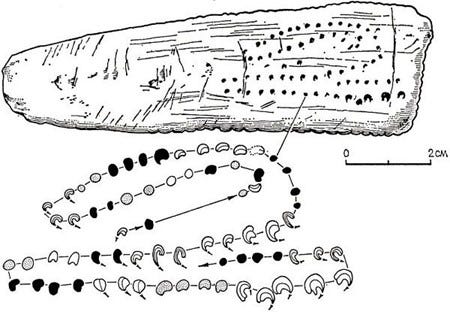
These bones depicting lunar phase calculations were portable and easy to carry over long distances. As humans evolved, more permanent calendars were created in the landscape with large wooden and eventually stone monuments.
Warren Field in Aberdeenshire, Scotland is the oldest calendar monument or megalith yet discovered in Europe. It was built around 8,000 BC, meaning that it was probably used by hunter-gatherer cultures of the late Paleolithic and Mesolithic eras rather than the sedentary farmers of the Neolithic period who are more commonly associated with megalith building. The site had twelve pits that appear to correlate with the twelve phases of the Moon and automatically corrected for the solar year by the alignment of its centre pit with the Winter Solstice.
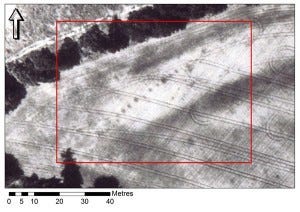

Many years later, the Callanish Stones on the Isle of Lewis, Scotland, were erected in the late Neolithic period. Some scholars believe they functioned as a lunar calendar before their ritualistic and religious use during the Bronze Age.
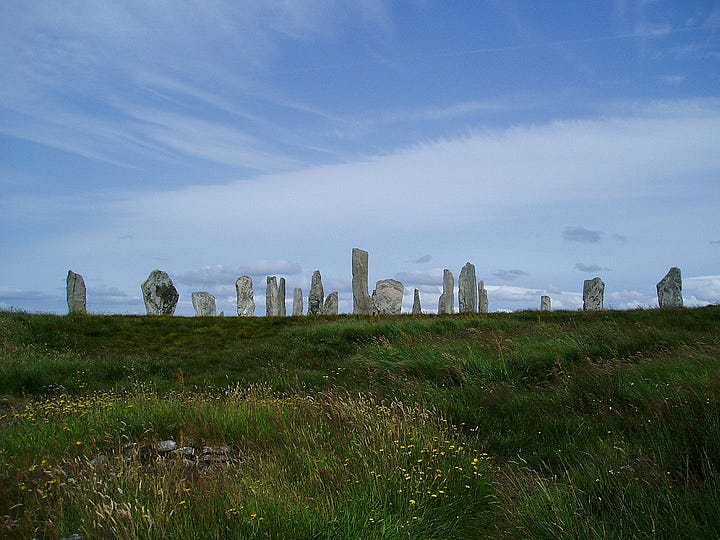
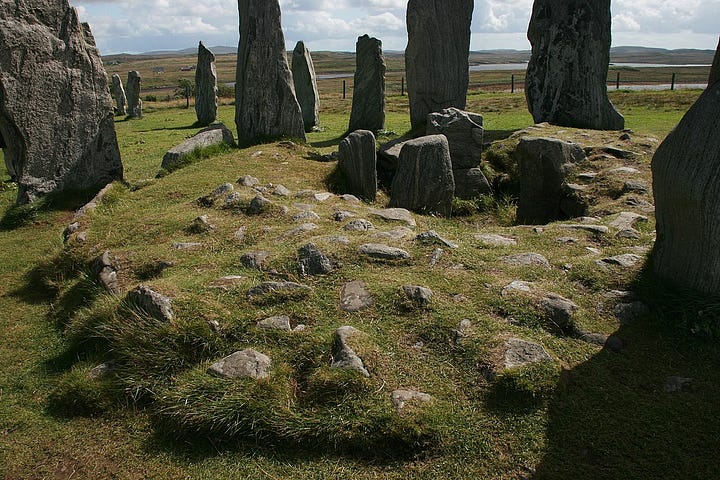
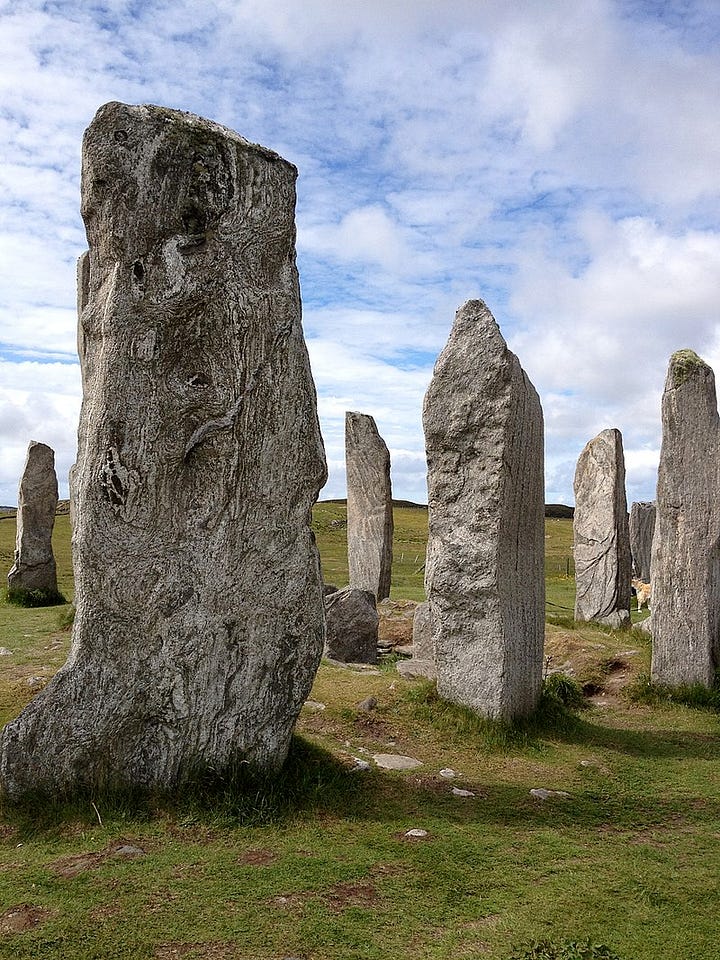
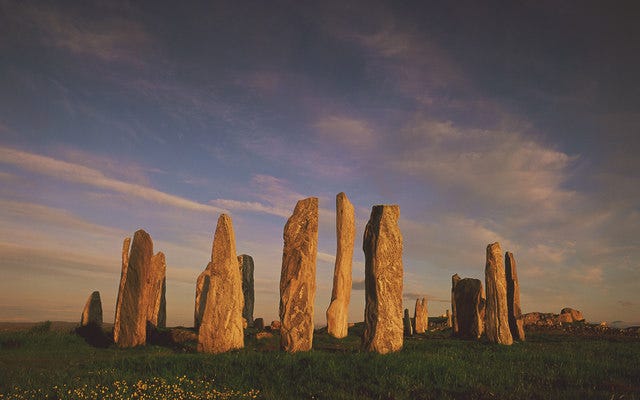
Stonehenge, located on the Salisbury Plain in Wiltshire, England is one of the most famous megalithic structures. It is aligned with the sunset on the Winter Solstice and the sunrise on the Summer Solstice. It could also have been used to mark the passage of the moon through the seasons for ritual and/or agricultural purposes. It was also likely used for ceremonial burials due to the charred remains of cremated bodies found underneath the structure.


One of the first articles published by Wheel & Cross, Echoes of the Ice Age: Winter Solstice and Mother’s Night, explores winter solstice traditions in Europe, including other megalithic structures that may have served as calendars such as Newgrange and the Loughcrew Cairns in County Meath, Ireland.
The lunar cycle was a crucial aspect of timekeeping for the ancient cultures of Western and Northern Europe and Indigenous communities around the world, including Australia’s First Nations peoples. Its use allowed humans to track the passage of time and to plan for seasonal activities such as planting, harvesting, fishing and hunting. However, a formalised lunar calendar was not introduced into Western and Northern Europe until the Roman Empire spread across the region.
The Roman Calendar
Unlike the ancient Greeks, whose calendars were developed by each city-state based on the phases of the moon and their individual regional festivals, the Romans developed a lunar calendar to systematise time for record-keeping and administration of their quickly expanding empire. The first Roman lunar calendar consisted of ten months, with each month beginning on the day of the new moon. Roman priests were responsible for adjusting the calendar to synchronise with the solar and seasonal year.
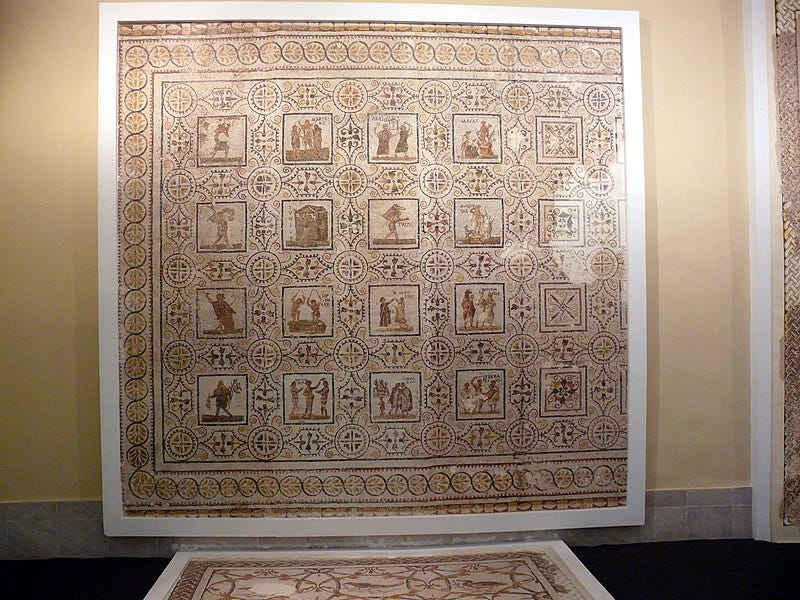
However, this calendar was not precise and led to confusion and disputes over the correct date, which prompted Roman Emperor Julius Caesar to adopt the Julian calendar in 46 B.C. Caesar consulted Sosigenes, an eminent Alexandrian astronomer, who developed a solar calendar based on the Earth’s revolutions around the Sun. One full orbit around the Sun, called the solar or tropical year, takes approximately 365.24 days. The Julian calendar divided 365 days into 12 months. February had 23 days, with a leap day added to the end of February every four years. This calculation error meant that the leap day occurred far too often and caused the Julian calendar to be increasingly out of sync with the equinoxes and solstices.
Many hundreds of years later, in 1582, Pope Gregory XIII introduced the Gregorian Calendar, which has a more precise formula for calculating leap years and realigned the calendar with the equinoxes and solstices. It is now the internationally accepted civil calendar and is also known as the Western or Christian calendar.
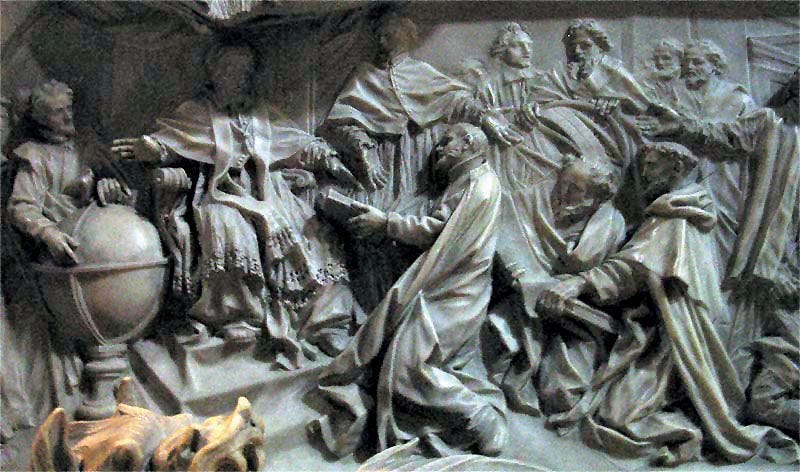
You might recall an old rhyme from pre-school or kindergarten to remember the number of days in each month:
Thirty days hath September, April, June, and November,
All the rest have thirty-one, except for February alone,
Which has but twenty-eight days clear, and twenty-nine in each leap year.
Wheel of the Month
As we’ve learned, the Roman lunar calendar consisted of ten months, starting in March and ending in December. The Romans initially did not measure the two months of winter because it was considered a time of inactivity and agricultural downtime, during which there were no significant events to mark. The first four months of the year were named after classical gods: March - Martius after the Roman god Mars (Greek Ares), April - Aprilis after the Greek goddess Aphrodite (Roman Venus), May - Maius after the Greek goddess Maia, and June - Junius after the Roman goddess Juno. The remaining six months were simply numbered: Quintilis (July) was the fifth month, Sextilis (August) was the sixth, September was the seventh, October the eighth, November the ninth, and December the tenth.
Rome’s second of seven kings before the founding of the Roman Republic, Numa Pompilius, added two months to winter: January was named after the god Janus, and February after Februa, a festival of purification held after the Saturnalia and New Year revelries. When Julius Caesar died in 44 BC and the Roman Republic along with him, the Roman Senate changed the name of the fifth month, Quintilis, to Julius in his honour, which became the modern-day ‘July’. In 8 BC, the first Roman Emperor, Augustus Caesar changed the name of the month of Sextilus to Augustus, in his own honour.
Roman months were further separated according to the phases of the moon. Kalends was the first day of the month and the start of a new lunar phase when the crescent moon was first sighted. This term is where the word ‘calendar’ comes from. Nones referred to the first-quarter moon, which occurred on the fifth or seventh day of the month, depending on the month, eight days before Ides. Ides referred to the full moon, which occurred on the thirteenth or fifteenth of the month depending on the month. The term ides is still recognised in popular culture due to William Shakespeare’s play Julius Caesar in which a fortune-teller warns Caesar to “beware the Ides of March,” an omen that inevitably came to pass with Caesar’s brutal murder.

Full moons were often important calendrical markers for many cultures around the world. In many regions, each full moon was named according to its season. For example, in the Celtic or Old English languages, the second full moon of the year was called Storm Moon, Ice Moon or Snow Moon due to the related seasonal weather, while some North American tribes called the second full moon of the year the Hunger Moon, due to a lack of food sources at this time of year, or Bear Moon referring to when bear cubs are born.
Farmers’ Almanacs often listed the names of these full moons, which marked important cycles in the farming year. For example, the Maine Farmer’s Almanac of 1937 lists the moons as named by early English ancestors.
The three Winter Moons after Yule (Winter Solstice) were called Moon after Yule, Wolf Moon, and Lenten Moon or Fasting Moon. The three Spring Moons after the ‘First Day of Spring’ (Spring Equinox) were called Egg Moon or Hare Moon, Milk Moon, and Flower Moon. The three Summer Moons after ‘The Long Day’ (Summer Solstice) were called Hay Moon, Grain Moon and Fruit Moon. And finally, the three Autumn Moons after ‘Summer’s End’ (Autumn Equinox) were called Harvest Moon, Hunter’s Moon and Moon Before Yule.
Lunar Folklore and Mythology
Australian First Nations
In Australia, the Moon holds profound spiritual significance and deep meaning within the Dreaming:
The Dreaming is First Nations peoples’ understanding of the world and its creation.
Passed from generation to generation through storytelling, the Dreaming shares beliefs that are connected to Country and the natural world. These stories incorporate creation, rules for living, social regulations, ethics and morality.
Each First Nations community has its own unique stories and beliefs about the Moon, reflecting their deep connection with the land, the seasons and the celestial bodies. In most recorded Dreaming stories, the Moon is depicted as a man with a difficult or bad character, while the Sun is depicted as a woman with a caring and nourishing nature.
Among the Yolngu people of Arnhem Land, the Moon is known as Ngalindi,
… he was big and round and fat like the full moon, and he was lazy. His wives and children got so angry because he did nothing to help, so they chopped off bits of him and he went from being a round fat moon and got thinner and thinner which is why you get phases on the Moon. Eventually he died and stayed dead for three nights before he came back to life, as a new moon. He cursed everyone and said that when he died he would come back to life, but when others died, they would stay dead.
CSIRO Indigenous astronomer Ray Norris. Source: ABC Radio Sydney
Despite the absence of tidal waters in Central Australia, the Dreaming stories of Arnhem Land communities, including the Yolgnu, describe the connection of the Moon’s phases with the tides.
When the tides are high, water fills the Moon as it rises. As the water runs out of the Moon, the tides fall, leaving the Moon empty for three days. Then the tide rises once more, refilling the Moon.
Source: Australian Indigenous Astronomy
The Meriam peoples of the Torres Strait tell a Dreaming story of the moon, who fell in love with a woman who wove mats during the night. After asking her why she wove at night and learning that she enjoyed the quiet and the light of his moon, he brought her up into the sky with him. The silhouette of the woman weaving her mat can be seen in the dark patches of the moon, particularly when it is full.
Understanding the connection between the moon and the tides was important for knowing when and where to fish, for planting crops and for tracking the swing of the seasons. Meriam elders teach that:
…when the Moon cusps point upwards (Meb metalug em), the Moon looks like a bowl collecting water. The water is choppy and you will see cumulus clouds in the sky. This occurs during the Sager (dry season), a period of fine weather.
When the Moon tilts on its side (Meb uag em), thin cirrus clouds are visible and a fuzzy ring may form around the Moon. The seas look calm and mirror-flat and you will see thin cirrus clouds, but this is when the water pours out of the bowl, falling as the rains of the Kuki (wet season).
Source: The Conversation
An important and sacred traditional song about the moon, the Gedge Togia kab-kar (sacred song of the moon rising over home), became critically important to the Meriam people during a legal battle with the Queensland government over sea rights.
Lawyers for the government argued that sea rights were not necessary, as each island was an enclave of its own with no contact or interaction with other islands or groups. The Meriam people knew this was wrong, and cited the Gedge Togia song as evidence in court. The traditional song comprising two languages showed clear connection to the islands before the colonisation of Australia.
The sacred traditional songs are called kab-kar. One of these is a Moon dance that helped the Meriam people win their legal battle for sea rights. It is called “Gedge Togia” and the lyrics consist of only three words: Gedge, Togia, Milpanuka. These words are drawn from two different languages spoken in the Torres Strait. “Gedge togia” means ‘rising over home’ (in this case is island of Mer, or Murray Island – home of Eddie Koike Mabo) in the Meriam Mir language. This is the language of the eastern islands and the only Papuan language indigenous to Australia.
“Malpanuka” refers to the Moon in the Mabuyag dialect of the Kala Lagaw Ya language. This is the language of the Western Island groups, and is an Aboriginal language. Thus, the song describes the Moon rising over home as Meriam people travelled from Mabuyag to Mer. Mer lies 200 km due east of Mabuyag. When Meriam people journeyed home, the Moon could be seen rising in the east.
Source: The Conversation - The Moon plays an important role in Indigenous culture and helped win a battle over sea rights (2021)
To understand the integral concept of The Dreaming to Australia’s First Nations peoples, please take the time to read this excellent article by First Nations non-profit Common Ground - The Dreaming. Sign up for their newsletter too and receive interesting and important knowledge about First Nations cultures, ways of knowing/being, traditions, history and projects.
The moon was also important in the mythologies of ancient European cultures.
Ancient Roman Mythology
The ancient Romans associated the moon with the goddess Luna, often depicted as the female complement to the male god Sol and the counterpart of the Greek goddess Selene. Luna was considered the divine embodiment of the moon's luminous presence and its influence over the night sky. She was believed to have ridden her silver chariot across the heavens, illuminating the darkness with her radiant light. Luna was also connected to various natural phenomena, including the tides and the cycles of growth and fertility.
She was also seen as a guardian of dreams and the protector of women. The crescent moon, a prominent lunar phase, was particularly associated with Luna, and her worship played a vital role in Roman daily life and religious practices.
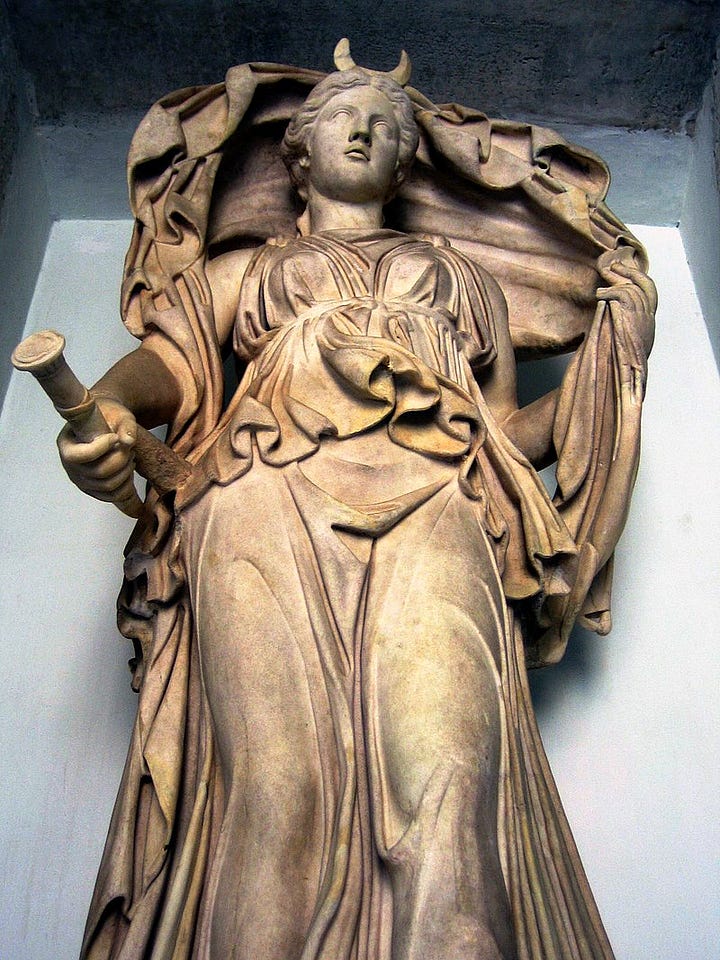

Norse and Germanic Mythology
In Norse and Germanic mythology, the moon was called Máni. He was the brother of the female sun called Sól and possibly the source of the term or concept, ‘the man in the moon’. Máni and Sól were fathered by Mundilfari, a personification of time. Máni was believed to have ridden a chariot pulled by a team of horses across the heavens, guiding the moon's course, and pursued by the wolf Hati. The moon's waxing and waning were attributed to Máni's actions, as he traversed the celestial realm.

The 23rd stanza of the poem Vafþrúðnismál, part of the Poetic Edda, describes the function of the moon and sun:
Mundilferi is he who began the moon,
And fathered the flaming sun;
The round of heaven each day they run,
To tell the time for men.
In another poem from the Poetic Edda, Alvíssmál (The Lay of Alvís), Alvís describes the different names of the moon:
Old Norse: Máni heitir með mönnum, en mylinn með goðum, kalla hverfanda hvél helju í, skyndi jötnar, en skin dvergar, kalla alfar ártala.”
English: It is called ‘Moon’ among men, ‘Mild Light’ among gods, In Hel ‘The Spinning Wheel,’ ‘Quick’ among Jötnar, ‘Skin’ among dwarfs, ‘Teller of time’ or ‘He who counts the year’ among elves.
Lunar Superstition
The moon has long been associated with various folkloric beliefs and superstitions. One of the most well-known is that of the werewolf, a creature said to transform from human to wolf-like form during a full moon. This belief likely stems from the observation that nocturnal animals, including wolves, were more active during the brighter light of the full moon. It is also connected to ancient shamanic practices such as the wearing of wolf skins and skulls as a form of shape-shifting and animal-ancestor reverence that was common across pre-historic Europe. The concept of werewolves has been woven into stories from many cultures, portraying the moon as a catalyst for supernatural transformation.

Even in modern times, full moons, in particular, have been associated with strange occurrences, such as sleep disturbances, heightened emotions, and even accidents. While scientific evidence for these claims is scarce, the idea persists in popular culture. The terms lunacy and lunatic, originating from the Latin word lunaticus, meaning ‘of the moon,’ reflect the historical belief that certain mental illnesses or periods of heightened emotional disturbance were linked to the lunar cycle. While modern medicine has debunked this connection, the association between the moon and human behaviour has left an indelible mark on language and cultural references.

The moon's influence on folklore and its effects on the Earth highlights how human societies have sought to explain the world around them through a blend of observation, imagination, and storytelling. The moon's captivating presence in the night sky has provided a canvas upon which these tales of transformation, mystery, and the unknown have been painted throughout history. Understanding its effects on the earth, the tides and agriculture have also helped humans survive and thrive in an uncertain and ever-changing world.
I hope you have enjoyed this rather long article and that it inspired you to appreciate the many facets of our relationship with the moon. Next week we welcome the first day of spring and Australia’s Wattle Day. In the meantime…
May you have warm words on a cold evening, a full moon on a dark night, and a smooth road all the way to your door. Traditional Irish Blessing.
















Share this post